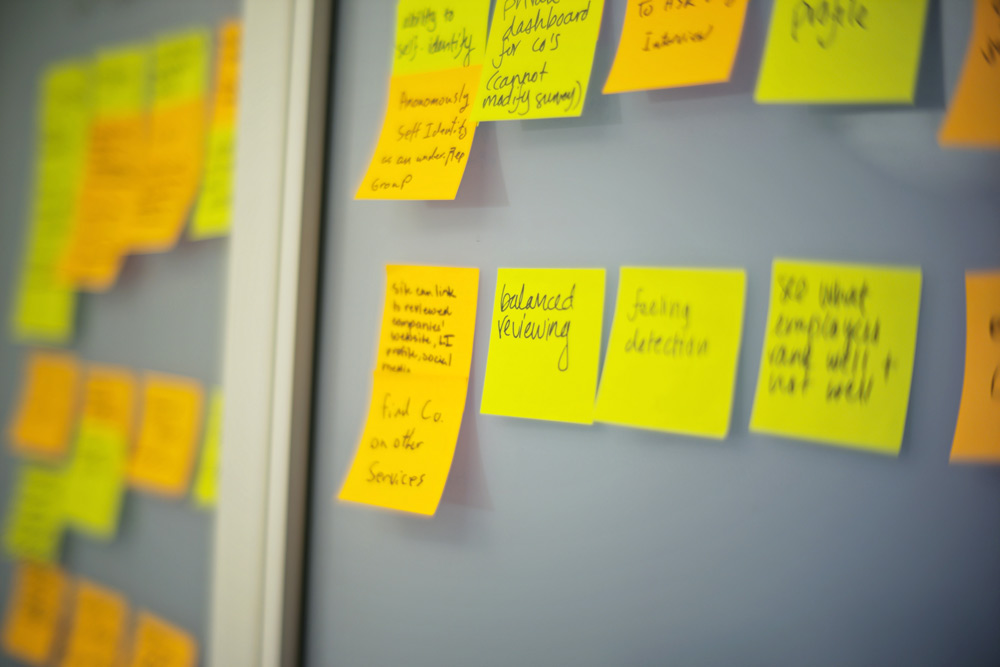Unfamiliar conditions impact design thinking’s effectiveness on new product development, study finds
Published: September 28, 2020 / Author: Melissa Jackson

Photo by Will H McMahan on Unsplash
Innovative solutions to customer problems are the bread and butter of any company looking to stand apart from the competition. In the quest for an industry edge, new product development teams often incorporate design thinking practices — user-centered, iterative problem-solving approaches that draw on both analysis and intuition — into their workflow.
 “It is very trendy and has been now for years,” said Nicholas Berente, a tech entrepreneur-turned-academic who studies innovation and design processes at the University of Notre Dame’s Mendoza College of Business. “The problem is that there is virtually no large-scale research on the effectiveness of design thinking. There are abundant anecdotal accounts and some serious case studies on its merits, and most conclusions do indicate that the impact of design thinking is positive. It helps with innovation, but there is little work on limitations or costs of design thinking.”
“It is very trendy and has been now for years,” said Nicholas Berente, a tech entrepreneur-turned-academic who studies innovation and design processes at the University of Notre Dame’s Mendoza College of Business. “The problem is that there is virtually no large-scale research on the effectiveness of design thinking. There are abundant anecdotal accounts and some serious case studies on its merits, and most conclusions do indicate that the impact of design thinking is positive. It helps with innovation, but there is little work on limitations or costs of design thinking.”
Without an empirical understanding of these relationships, new product development teams potentially could be investing time and resources into less effective design practices. To fill in these gaps, Berente, the Viola D. Hank Associate Professor of IT, Analytics, and Operations at Notre Dame, collaborated with Varun Nagaraj, chief operating officer at Bidgely Inc., an AI-based SaaS company in Silicon Valley; Kalle Lyytinen of Case Western Reserve University; and James Gaskin of Brigham Young University, to take a closer look at the conditions and effectiveness of design thinking.
Their study, “Team Design Thinking, Product Innovativeness, and the Moderating Role of Problem Unfamiliarity,” was published in the July 2020 issue of The Journal of Product Innovation Management. The study sheds light on how to conceptualize the impact of design thinking on new product development and offers a method to measure design thinking in a way that makes sense to what project development teams do.
Berente and his colleagues were curious about if and how team design thinking shapes two key aspects of product innovation: product utility and product novelty. They also wondered how unfamiliar conditions — specifically, how well the team understood the customer and the customer’s problem at the start of the project — might impact the effectiveness. Berente and his colleagues examined 247 product launches to see whether those teams incorporated four principles of team design thinking into their daily activities and interaction.
“Design thinking is not a specific process. It is more of an approach with a variety of processes and tools that teams can mix and match as needed,” Berente said. “In our measures, we focused on the overall approach across four key dimensions: user empathy, iteration, collaborative abduction and collaborative representation.”
The study defines user empathy as gathering insights from a broad network of stakeholder and reframing the problem and potential solutions around the user’s needs and environment. Collaborative abduction involves synthesizing diverse inputs from a broad network of stakeholders in order to imagine creative solutions. Iteration includes testing assumptions and using the information to evolve solutions that reflect new lessons learned. Collaborative representation incorporates multiple representational artifacts flexibly, such as drawings, wireframes and demos to gather feedback.
“We found that design thinking appears to help to make products more useful across the board. This is a good thing, because product usefulness is strongly associated with market success,” Berente said.
However, while design thinking appears to generate new ideas in familiar contexts, Berente said the data indicated that design thinking does not appear to have the same result in unfamiliar contexts.
“This is an important boundary condition of design thinking,” he said. “Design thinking can help to shake things up in familiar situations and generate novelty, but in unfamiliar situations where product development teams need to get up to speed in the context, other, less open-ended processes may be more fruitful if the goal is to do something new and different.”
He adds, “Of course, product development teams must be careful not to emphasize novelty too much — our findings are consistent with much of the research that shows too much novelty may be negatively related to market success overall, at least in the short term.”
Berente teaches strategic business technology to undergraduates and Notre Dame MBA students. He has incorporated design thinking into his courses for the past decade.
Related Stories




